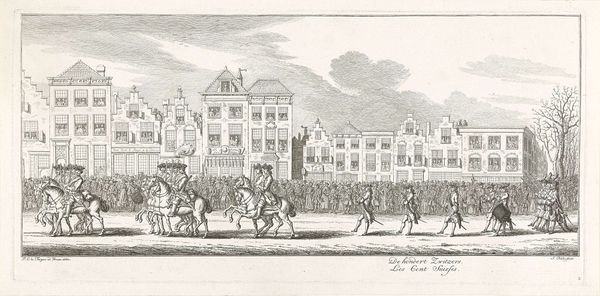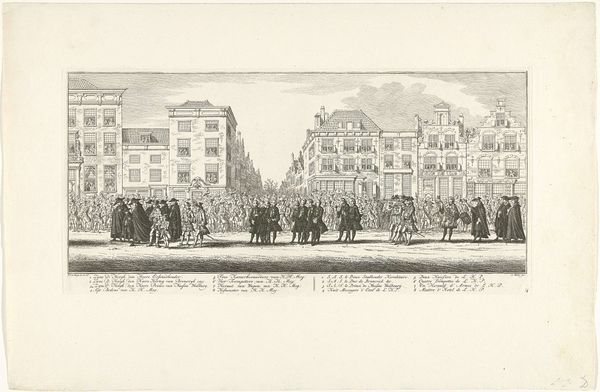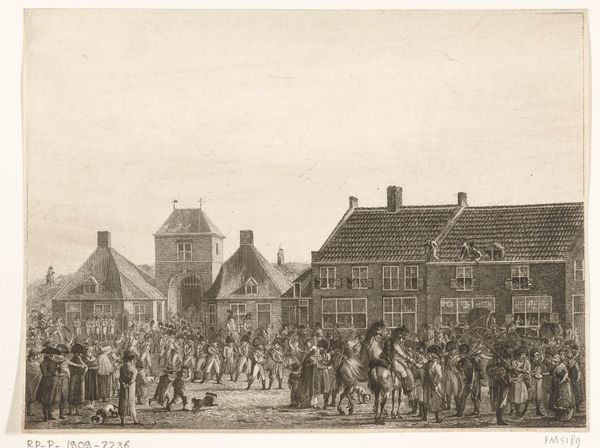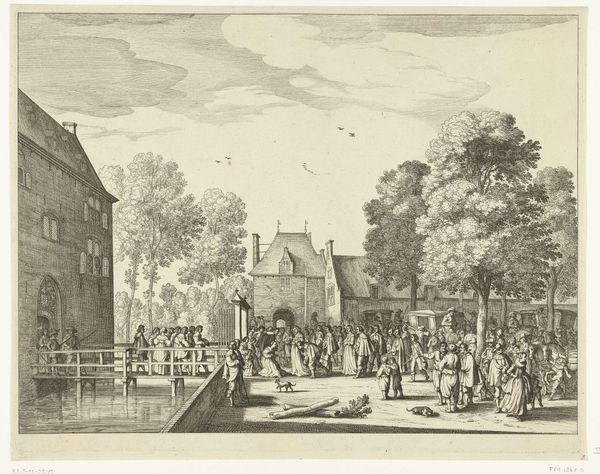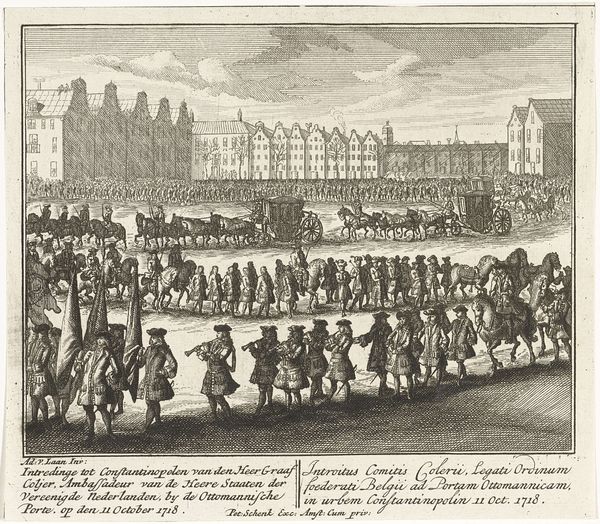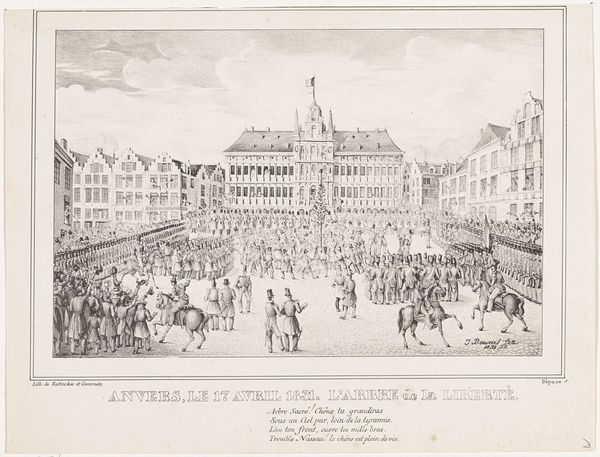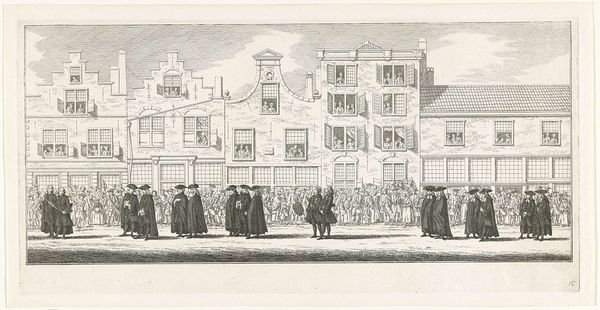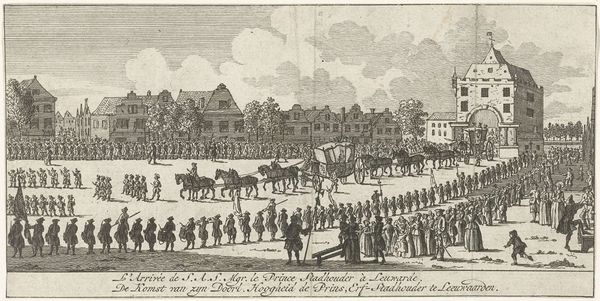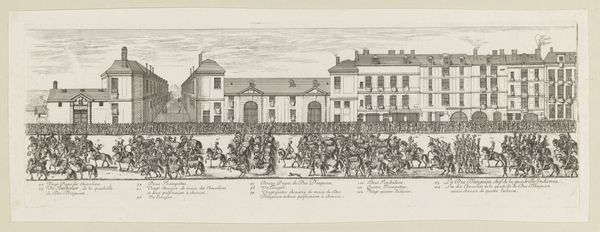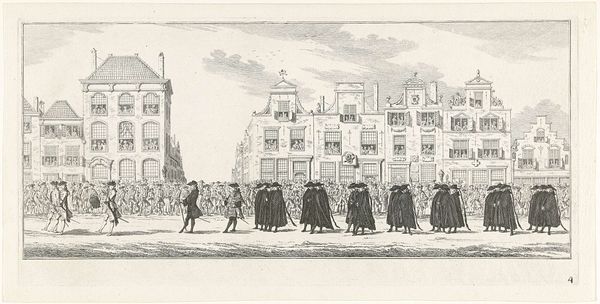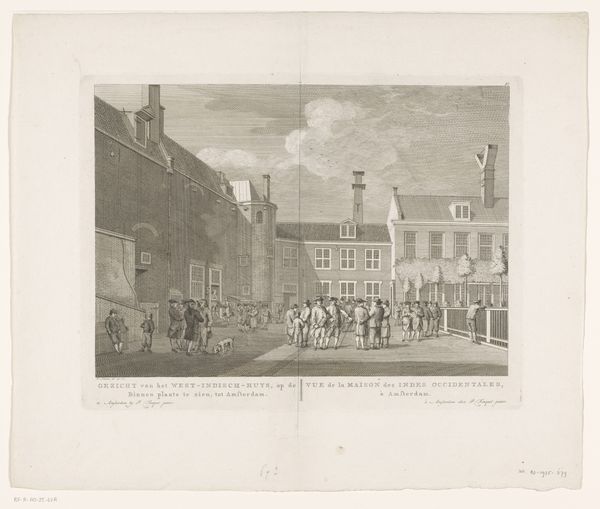
Soldaten te paard in de lijkstoet van Anna van Hannover te Delft, 1759 1759 - 1761
0:00
0:00
print, engraving
#
narrative-art
#
dutch-golden-age
# print
#
landscape
#
line
#
cityscape
#
history-painting
#
engraving
#
realism
Dimensions: height 188 mm, width 396 mm
Copyright: Rijks Museum: Open Domain
Simon Fokke made this etching in 1759, depicting the funeral procession of Anna of Hanover in Delft. It's a scene brimming with social and political significance. Delft was, at the time, part of the Dutch Republic, a society deeply shaped by its mercantile power and complex political structures. Anna, as the wife of the Dutch stadtholder, represented a crucial link to European aristocracy. Her funeral wasn’t just a private affair; it was a public spectacle, reinforcing the existing social hierarchy. The procession itself, with soldiers on horseback and crowds of onlookers, demonstrates the power and reach of the ruling class. The architecture in the background - the grand houses and formal archways - further emphasizes the wealth and status associated with Anna. We might consider how Fokke's work reflects, or perhaps subtly critiques, the opulence and formality of this event. To truly understand this piece, we must consider the social conditions that shaped its creation. Contemporary newspapers, pamphlets, and archival records can reveal the broader context of Anna’s role and the political climate of the time. Art history reminds us that meaning is always contingent on context.
Comments
No comments
Be the first to comment and join the conversation on the ultimate creative platform.
